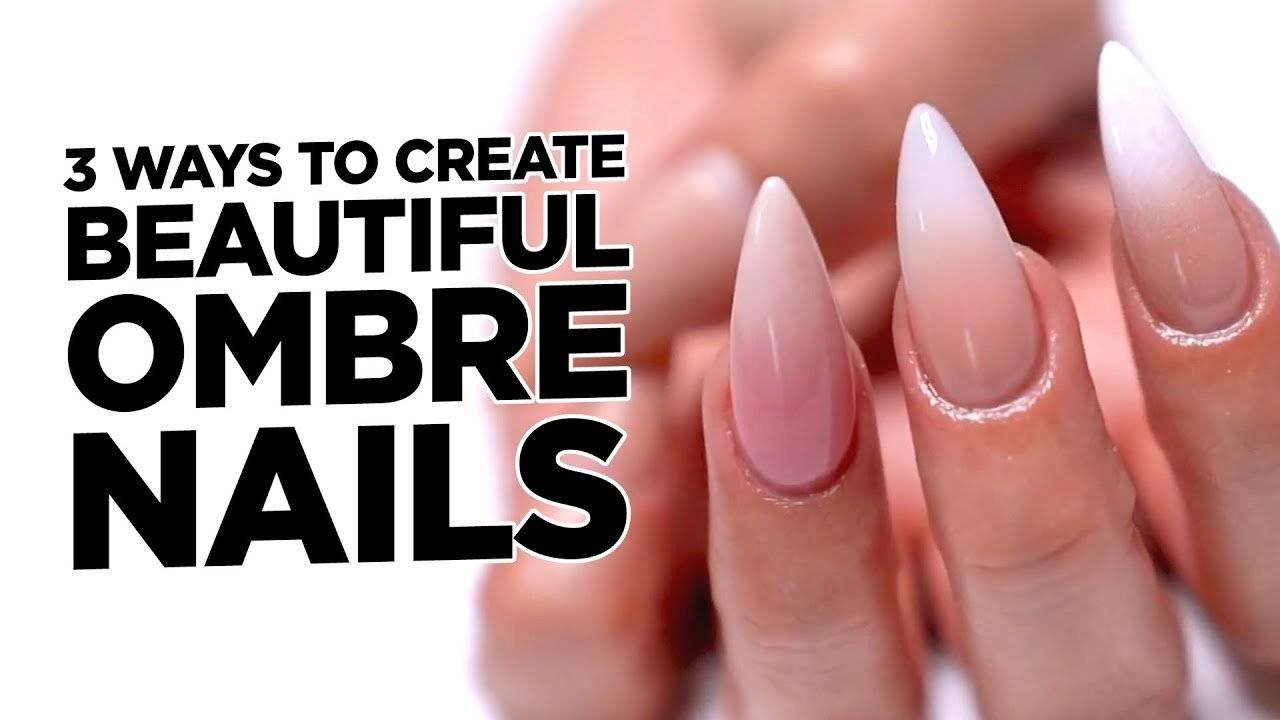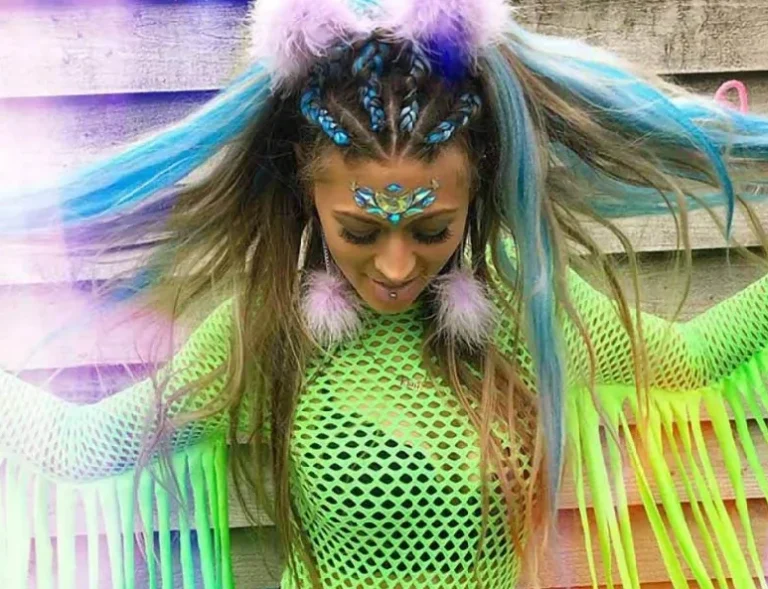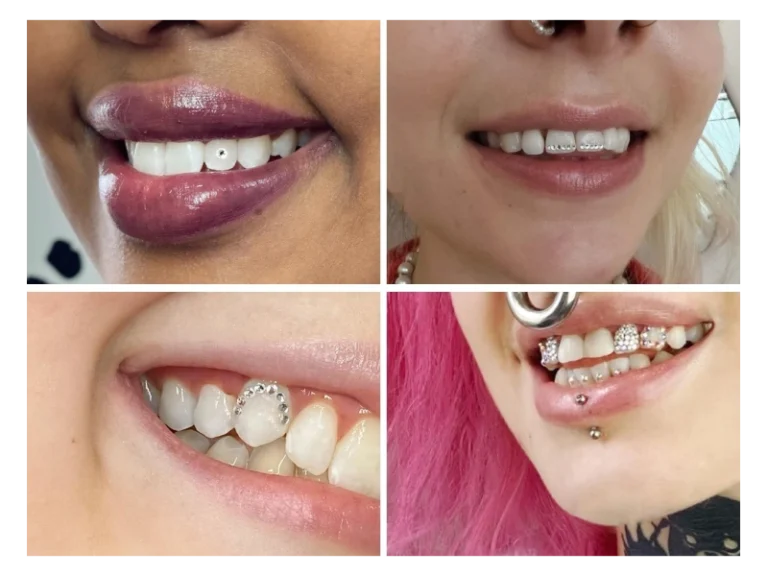
Introduction
You ever stare at someone’s nails and just… zone out?
Not because you’re weird, but because the colors are blending so perfectly, it looks like a tiny piece of sunset on each fingertip. Or maybe it’s a frosty pink fading into icy white, like a slushie you’d sip in July. That’s ombre nails for you. Subtle but striking. Elegant but still playful.
And yeah, they’re everywhere. From salon chairs in L.A. to DIY kits in your cousin’s bathroom in Wisconsin. Ombre nails are kinda like that one friend who fits in with every group—classy enough for weddings, edgy enough for festivals, chill enough for your 9-to-5.
But here’s the kicker: they look way more complicated than they actually are.
So let’s break this whole thing down from the roots (pun intended) to the trends, the struggles, and how to actually pull them off without losing your mind or your polish brush.
So What Are Ombre Nails, Exactly?
Let’s clear the fog.
Ombre nails are nails with a gradient effect—one color fades into another. No hard lines, no stripes. Just smooth, buttery transitions from, say, deep purple at the tip down to nude near the cuticle.
The term “ombre” (which is French for “shaded”) actually came from the fashion world. First showed up in fabric dyeing—think denim going from dark to light. Then it hit the hair world. Remember those ombre hair color trends from the early 2010s? Yep, same idea. Just now… on your nails.
You can have:
-
Classic two-tone ombre (dark to light, or light to dark)
-
Multicolor ombre (3+ shades, rainbow, pastel, neon—whatever your flavor)
-
Vertical or horizontal ombre (yes, it’s a thing)
-
Glitter ombre (chef’s kiss)
And you can do it with gel, acrylic, dip powder, or regular ol’ nail polish (though that last one might drive you slightly insane without practice).
Why Ombre Nails Matter Right Now
Here’s the thing: trends come and go in beauty, but ombre nails have stuck around. And that says something.
Why? A few reasons:
-
They’re versatile AF. You can wear nude ombre to a job interview, or hot pink to a party. Same technique, different vibe.
-
They hide nail growth like a ninja. Because there’s no solid “cuticle line,” even when your nails grow out, it doesn’t scream “I need a fill!” like a French tip might.
-
They’re selfie bait. Let’s not lie to ourselves. Ombre nails photograph beautifully. And in the age of IG stories and TikTok hauls? That matters.
-
They give off luxury vibes. Even cheap ombre nails can look expensive if done right.
Plus, everyone’s always trying to be a little different… but not too different. Ombre nails hit that sweet spot.
The Core Features & Benefits (Real Talk Edition)
Here’s a quick-n-dirty breakdown of what makes ombre nails such a fan favorite:
| Feature | Why It Slaps |
|---|---|
| Gradient finish | Smooth transition = visual satisfaction. No harsh lines. |
| Customizable | Colors, direction, sparkle—whatever you want. |
| Hides imperfections | Chipped edge? Grown-out base? Ombre masks it well. |
| Low maintenance | Especially with gel or dip—less noticeable regrowth. |
| Trendy yet timeless | Been in style since forever but still feels fresh. |
But also… it’s not just about looks.
Doing or getting ombre nails can be weirdly therapeutic. Watching the blend come together? Kinda hypnotizing. Almost meditative.
Real Stories, Real Nails: Ombre IRL
Let me tell you about Jess.
Jess is a wedding planner in San Diego. Always running around. Always on display. She used to swear by classic French tips… until she discovered ombre.
Now? She gets baby pink to white ombre gel nails every two weeks. Says they last longer, look cleaner, and her brides are constantly complimenting her hands when she shows them mood boards. One bride even asked if she could match her nails for the big day.
Or take Marcus—yes, a guy. He’s a visual artist in Brooklyn, and he’s been rocking black-to-silver ombre acrylics for months. Says it’s his way of “wearing gradients outside the canvas.” Super cool.
These stories matter because they show how personal ombre nails can be. They’re not just trendy—they’re expressive.
Ombre vs The Rest: What Makes It Different?
Here’s where it gets interesting.
Let’s stack ombre up against a few other nail styles:
| Style | Vibe | Pros | Cons |
|---|---|---|---|
| French tips | Clean, classic | Sophisticated, matches everything | Obvious regrowth |
| Solid color | Simple, bold | Quick to apply | Gets boring fast |
| Nail art | Creative | Endless options | Time-consuming, can look messy |
| Chrome/mirror | Futuristic | Super eye-catching | Chips easily |
| Ombre | Subtle flex | Modern, forgiving, versatile | Takes some skill to get right |
Honestly, ombre nails kind of balance out the extremes. They’re not boring, but they’re not too loud either.
Problems, Pitfalls & Imperfect Solutions
Okay, let’s not sugarcoat it—ombre nails aren’t always easy.
The Problems:
-
DIY is tricky. Without the right sponge or brush technique, you’ll get streaks, blobs, or weird lines.
-
Color choices matter. Not all shades blend well. Neon green into navy blue? Yikes.
-
Time-consuming. Especially for beginners. This isn’t a five-minute mani.
-
Can be pricey. Salons charge extra for ombre blends, especially with gels or powders.
But Here’s What Helps:
-
If you’re DIY-ing, use a makeup sponge. Dampen it a little, dab gently. Patience, not pressure.
-
Go with colors in the same family—like peach to coral, or lavender to mauve.
-
Use a clear top coat to blur lines if the gradient looks harsh.
-
And honestly? Practice on fake nails first. Save yourself the frustration.
It’s a learning curve, for sure. But worth climbing.
Myths vs Facts
Let’s bust a few nail myths while we’re here.
| Myth | Truth |
|---|---|
| Ombre nails can only be done in salons | Nope. Tons of people DIY it at home successfully (eventually). |
| You need special tools | You can start with a sponge and toothpick. Fancy brushes come later. |
| Only gels work for ombre | Regular polish and dip powder can work too—it’s about the technique. |
| Ombre looks fake or tacky | When done right? It’s stunning. It’s the bad blends that look off. |
| Ombre = only two colors | Nah. You can have full-on rainbow ombre if you want. No rules here. |
The Future of Ombre Nails
Alright, bit of a crystal ball moment.
Where’s ombre headed?
We’re already seeing:
-
Textured ombre (matte fades into glossy!)
-
3D ombre art (gel accents that blend into the base)
-
Ombre + chrome hybrids
-
AI-designed nail color maps (yeah, that’s a thing now)
And there’s buzz about thermo-reactive ombre nails—basically, they change color with temperature. Like mood rings but for your fingers.
So yeah, ombre’s not going anywhere. It’s evolving. Getting smarter, sleeker, and more customizable.
Tips & Advice (From Me to You)
If I were you and just getting started?
-
Start with light colors. Easier to blend, and mistakes are less obvious.
-
Watch a few tutorials—but don’t obsess. You’ll learn by doing, not watching.
-
Invest in a few key tools: A soft sponge, a clean-up brush, and a solid top coat.
-
Don’t skip the base coat. Helps colors glide and stick better.
-
Seal the deal with a thick top coat. That’s what makes it look pro-level.
Also, give yourself grace. Your first ombre might look like a melted crayon. That’s fine. Next time will be better.
Expert Nuggets & Quotes
“Ombre nails are like contouring for your fingertips—if done right, they elevate the whole look without being obvious.”
— Tina Nguyen, celebrity nail artist
“The gradient trend reflects our current obsession with smooth transitions—in style, in tech, in life.”
— Dr. Monica Bale, cultural trends analyst
“If your ombre doesn’t blend, blame the polish formula. Some brands just don’t play well together.”
— *@NailedItDIY, popular nail


